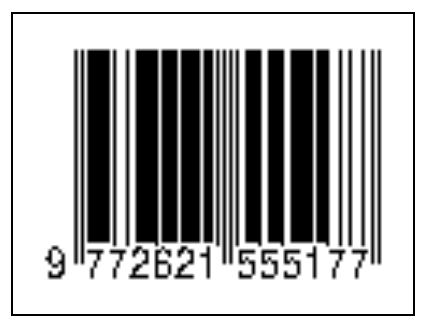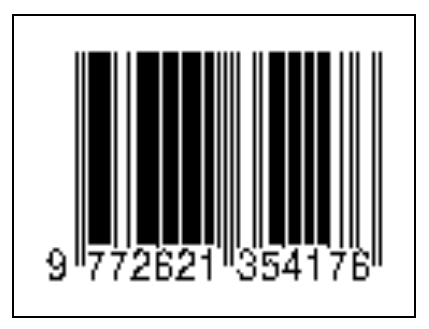Perencanaan Kebutuhan Energi Listrik PLTS Hybrid-Off Grid pada Kolam Budidaya Ikan Nila menggunakan Recirculating Aquaculture System (RAS)
Keywords:
PLTS, ybrid Off-Grid, Recirculating Aquaculture, Fish farming, Solar CellAbstract
This study aims to design and analyze a Hybrid Off-Grid Solar Power Plant (PLTS) system to support the operation of Nile tilapia farming based on the Recirculating Aquaculture System (RAS) in Parangargo Village, Wagir District, Malang Regency. The location was chosen due to its high solar energy potential, with an average solar irradiation intensity of 4.5–5.2 kWh/m² per day. The research methodology includes identifying RAS electrical load requirements, calculating solar panel capacity, designing an energy storage system using VRLA batteries, and conducting economic analysis. The system is designed to meet a daily energy demand of 4,200 Wh with a solar panel capacity of 1,250 Wp and a battery capacity of 24V 400Ah. The hybrid off-grid configuration allows the PLTS to serve as the primary power source with the grid (PLN) as backup. The analysis results indicate that the system can provide a reliable and environmentally friendly power supply, with operational cost savings of approximately IDR 2.21 million per year and a payback period of around 11.7 years. The implementation of this system has the potential to reduce dependence on the grid, lower production costs, and enhance the operational efficiency of tilapia farming
References
J. Timmons and J. Ebeling, Recirculating Aquaculture, 5th ed., Ithaca: Cayuga Aqua Ventures, 2021.
Y. M. Cholily, M. Effendy, R. F. Indrawan, S. Subairi, R. R. Hakim, and B. I. Suwandayani, "Diseminasi pakan mandiri pada budidaya ikan berbasis teknologi Resirculating Aquaculture System (RAS) berbantuan solar cell di Desa Parangargo," Community Development Journal: Jurnal Pengabdian Masyarakat, vol. 5, no. 5, pp. 10252-10260, 2024.
A. Elsaid, M. Sayed, M. Abdelkareem, M. Baroutaji, and A. Olabi, “Environmental impact of solar energy systems: A review,” Science of the Total Environment, vol. 751, p. 141989, Feb. 2021.
E. F. J. Edas, N. Nachrowie, and S. Subairi, “Power Manajemen Sistem Pembangkit Listrik Tenaga Surya Menggunakan SCADA,” Blend Sains Jurnal Teknik, vol. 2, no. 4, pp. 298–302, May 2024.
S. R. D. Sari and A. Murdianto, “Perencanaan Pembangkit Listrik Tenaga Surya Skala Industri Berbasis PVsyst,” Journal of Electrical Engineering and Computer (JEECOM), vol. 5, no. 2, pp. 171–179, Oct. 2023.
R. Ullah, Z. Liang, M. A. Rauf, and A. El-Shafie, “Solar-Powered Aquaponics: A Sustainable System for Food and Energy Security,” IEEE Access, vol. 9, pp. 133508–133522, 2021.
C. Xu, R. A. Dunlap, and W. Zheng, “Hybrid renewable energy systems for aquaculture: Current status, challenges and future perspectives,” Renewable and Sustainable Energy Reviews, vol. 161, p. 112351, June 2022.
A. A. Oladimeji et al., “Performance assessment of solar photovoltaic-powered aquaculture aeration systems,” Energy Reports, vol. 7, pp. 244–252, Mar. 2021.
W. Handani, A. Susilo, and A. D. Sudjatmiko, “Rancang Bangun Sistem Pakan Ikan Otomatis Menggunakan Panel Surya,” Jurnal Teknologi dan Sistem Komputer, vol. 8, no. 4, pp. 345–350, 2020.
F. Gultom, “Pemanfaatan Panel Surya Sebagai Energi Alternatif untuk Pompa Air Kolam Ikan Lele,” Jurnal Elektro dan Telekomunikasi Terapan, vol. 8, no. 1, pp. 55–62, 2020.
A. Jamiyanti, S. Hartanto, and M. Ramadhani, “Implementasi PLTS untuk Sistem Monitoring Kualitas Air Berbasis IoT pada Budidaya Ikan,” Jurnal Teknik ITS, vol. 10, no. 2, pp. D172–D176, 2021.
M. F. Panggabean, “Penggunaan Energi Surya untuk Aerator dan Lampu Penerangan Kolam Ikan di Malam Hari,” Jurnal Energi Terbarukan, vol. 12, no. 2, pp. 89–94, 2021.
Y. D. Pratama and R. Nurcahyo, “Analisis Kelayakan Energi Surya untuk Peternakan Ikan Hias Skala Rumah Tangga,” Jurnal Ilmiah Teknik Industri, vol. 19, no. 1, pp. 35–44, 2020.
I. Mulyani, B. Utomo, and H. Hidayat, “Perancangan PLTS untuk Irigasi Kolam Terpadu pada Daerah Terpencil,” Jurnal Energi dan Lingkungan, vol. 8, no. 1, pp. 11–18, 2022.
R. Susanto, F. Fadillah, and T. Maulana, “Efisiensi Penggunaan Inverter dan Baterai pada Sistem PLTS Skala Kecil di Bidang Perikanan,” Jurnal Teknologi Energi, vol. 9, no. 3, pp. 167–173, 2020.
R. Lestari and D. Suryadi, “Analisis Sosial Ekonomi Adopsi Teknologi Energi Terbarukan oleh Petani Ikan di Pedesaan,” Jurnal Sosial Ekonomi Perikanan dan Kelautan, vol. 15, no. 2, pp. 123–132, 2021.
H. Sihombing, S. Napitupulu, and L. Tobing, “Pengembangan Sistem Pompa dan Aerator Otomatis Bertenaga Surya pada Budidaya Ikan Nila,” Jurnal Rekayasa dan Manajemen Sistem Industri, vol. 9, no. 2, pp. 231–238, 2021.
D. Kurniawan, R. Syafira, and L. Anindita, “Evaluasi Kinerja PLTS untuk Operasional Hatchery Ikan Nila Selama Musim Hujan,” Jurnal Perikanan dan Kelautan, vol. 13, no. 1, pp. 27–34, 2022.
Global Solar Atlas, “Site – ‑8.012784,112.594972,” GlobalSolarAtlas.info. [Online]. Available: https://globalsolaratlas.info/detail?s=-8.012784,112.594972&m=site&c=-8.040193,112.60025,10. [Accessed: 2-Aug-2025].
hutabarat, SH, Putra, FA. “Perbandingan metode exponential smoothing dan arima pada peramalan curah hujan di kota Malang”. JATI (Jurnal Mahasiswa Teknik Informatika). 2025 May 26;9(4):7294-300.
Downloads
Published
How to Cite
Issue
Section
License
Copyright (c) 2025 Subairi Subairi, Machmud Effendy, Resi Dwi Jayanti Kartika Sari, Rahman Arifuddin, Muhammad Ali Ridlo

This work is licensed under a Creative Commons Attribution-NonCommercial 4.0 International License.





